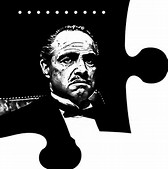In the
midst of working on a new manuscript, I suddenly found myself asking a question
that SHOULD have had an obvious answer—especially because the story I am
telling involves manipulation, crime, even murder:
midst of working on a new manuscript, I suddenly found myself asking a question
that SHOULD have had an obvious answer—especially because the story I am
telling involves manipulation, crime, even murder:

WHO IS
THE BAD GUY IN THIS STORY? MY MC’s FOE? THE ANTAGONIST?
THE BAD GUY IN THIS STORY? MY MC’s FOE? THE ANTAGONIST?
While I could easily write down the name of the killer, he wasn’t really the
foe of the MC. I could name the characters who manipulated others or kept
guilty secrets, but none of them were cut-and-dried baddies out to destroy my narrators. This
question got me to thinking about the question of literary antagonists.
foe of the MC. I could name the characters who manipulated others or kept
guilty secrets, but none of them were cut-and-dried baddies out to destroy my narrators. This
question got me to thinking about the question of literary antagonists.
In
genre fiction, where the term “villain” can frequently be substituted for the
word “antagonist” (and correspondingly, the protagonist can be seen as a “hero,”
naming the main character’s foe can be fairly simple. Here are a few examples:
genre fiction, where the term “villain” can frequently be substituted for the
word “antagonist” (and correspondingly, the protagonist can be seen as a “hero,”
naming the main character’s foe can be fairly simple. Here are a few examples:
- HARRY
POTTER series by J. K. Rowling. ANTAGONIST: Voldemort (shhhh!) - CINDER
(Lunar Chronicles) by Marissa Meyer: ANTAGONISTS: Cinder’s stepmother; the evil
Lunar Queen - THE
FIFTH WAVE by Rick Yancey: ANTAGONISTS: The Others, Commander Vosch - GRACELING
by Kristin Cashore: ANTAGONISTS: King Randa, King Leck - In the
JAMES BOND oeuvre, there’s an actual catchphrase – “Bond Villain” – not unlike
the “Dark Side” of the STAR WARS universe.
However,
let’s try this same exercise with new and old realistic fiction titles:
let’s try this same exercise with new and old realistic fiction titles:
- ALL THE
BRIGHT PLACES by Jennifer Niven: ANTAGONIST(S): Mental illness; Theodore Finch
(also a protagonist – and his own worst enemy) - THE
FAULT IN OUR STARS by John Green: ANTAGONIST: Cancer - THE
TRUTH ABOUT FOREVER by Sarah Dessen: ANTAGONIST: The past; the pain of loss
that prevents feeling - THE
GREAT GATSBY by F. Scott Fitzgerald. ANTAGONIST: Tom Buchanan? OR Narrator
Nick Carraway’s dream of being with Buchanan’s wife, Daisy? OR everything that
kills the American Dream? - THE
CATCHER IN THE RYE by J. D. Salinger. ANTAGONIST: Holden Caulfield
(protagonist) is his own antagonist through his cynicism, distrust and
inability to conform with social norms.

I realize I am
not inventing any wheels here. This is basic stuff. HEROISM can be political,
social, physical or emotional. VILLAINS can be external enemies or internal
demons. You can confirm these basics with good old Merriam-Webster, who defines ANTAGONIST is “…one that contends with or opposes another” or at LiteraryDevices.net where ANTAGONIST is described as “…a character or a group of characters which stand in opposition to the protagonist or the main character…from Greek word “antagonistēs” that means opponent, competitor or rival.”
not inventing any wheels here. This is basic stuff. HEROISM can be political,
social, physical or emotional. VILLAINS can be external enemies or internal
demons. You can confirm these basics with good old Merriam-Webster, who defines ANTAGONIST is “…one that contends with or opposes another” or at LiteraryDevices.net where ANTAGONIST is described as “…a character or a group of characters which stand in opposition to the protagonist or the main character…from Greek word “antagonistēs” that means opponent, competitor or rival.”

Nonetheless, it
is a worthy exercise to clarify the kind of ANTAGONISTIC characters, emotions,
or other elements at play in your story and to develop them as fully as you do
your PROTAGONIST and supporting “positive” characters.
is a worthy exercise to clarify the kind of ANTAGONISTIC characters, emotions,
or other elements at play in your story and to develop them as fully as you do
your PROTAGONIST and supporting “positive” characters.
Try holding your current manuscript up to the examples listed above. Which title
most closely aligns with your story’s protagonist/antagonist dynamic? Can you
think of another book which is a better match? Consider reading that title to
see how the author fleshes out these elements and apply these insights to
enriching your own story.
most closely aligns with your story’s protagonist/antagonist dynamic? Can you
think of another book which is a better match? Consider reading that title to
see how the author fleshes out these elements and apply these insights to
enriching your own story.
Happy
Writing!
Writing!


